Nest‐building behaviors vary based on the complexity of the nest structure, the availability of materials, and the number of birds involved in the construction of the nest.
Some nest types involve more investment and skill to construct than others.
For example, scrape nesters probably spend much more time locating a suitable site than forming the simple nest depression itself.
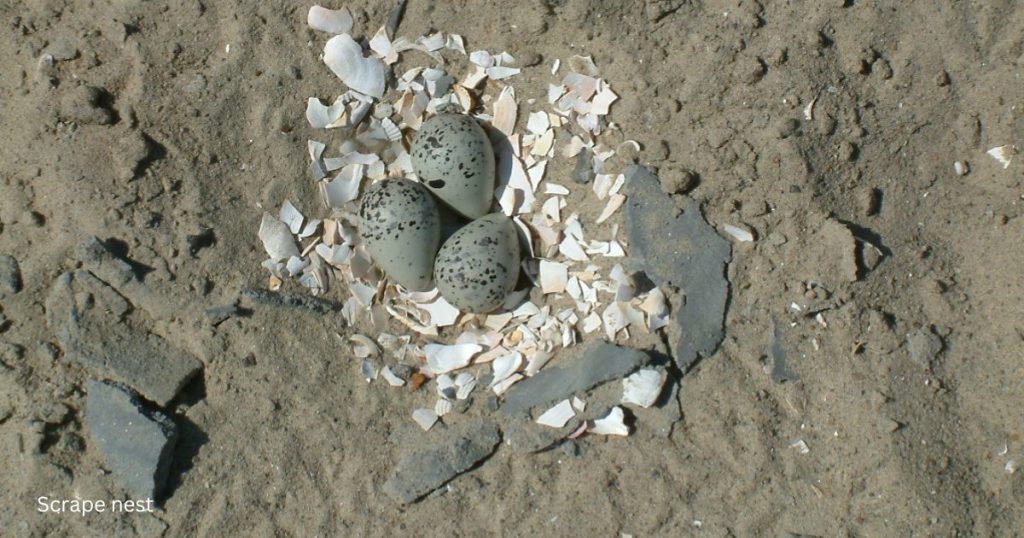
When building platform nests, most birds lay a foundation of coarse sticks across branches or another supporting substrate, then add additional sticks until the bulk of the platform is built, and finish with nice sticks and a lining, if any.
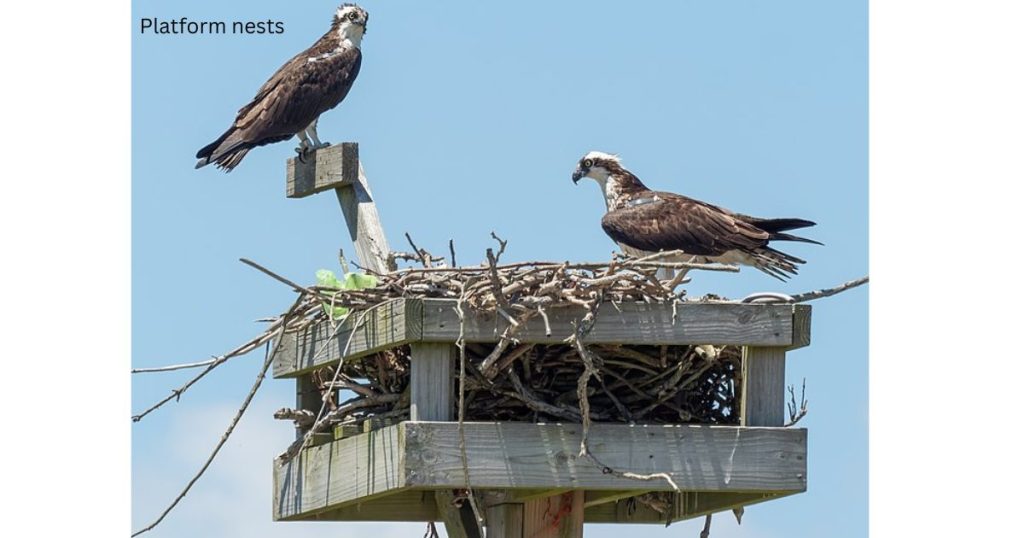
Building a cup nest requires more specialized techniques. As in platform construction, birds usually start with coarse material for the nest foundation, adding finer materials as they work inward and upward toward the cup. To pack and solidify the nest, the building bird may sit and turn in the center, thrusting its legs and pressing its breast against the surrounding materials. Once the cup is coherent and strong, the bird will often add lining either by packing it down via continued breast lunges, body rotations, and belly quivers, or by using its bill to weave the lining into existing materials. The aptly named Common Tailorbird of Southeast Asia adds an extra step at the beginning of this process by sewing a funnel‐shaped cradle, and then building its soft cup nest inside, under its cover: first, it pierces a series of small holes close to the edges of two large, living leaves. Then, it inserts plant fibers, cocoon silk, or cobwebs through the holes and draws the leaves together.
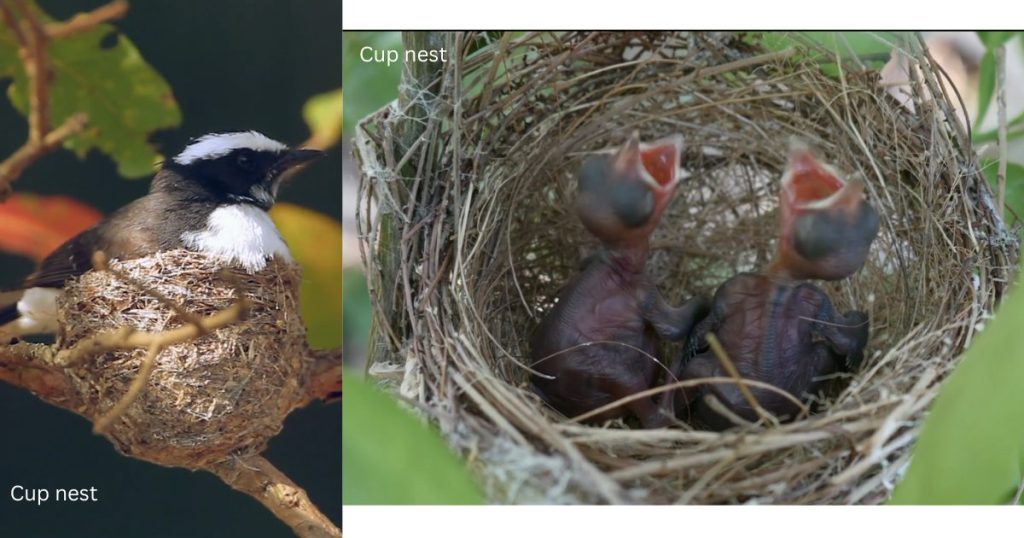
Pendulous cup nesters show even more intricate building behaviors. With incredible dexterity, these avian weavers hold onto structural material with their feet, using their bills to weave strands together and form knots. These expert builders flit their heads back and forth, over and under, meticulously positioning supple fibers usually freshly gathered grass or other green and pliant plant fibers into a pendent formation. As the fibers begin to dry, the nest walls solidify with considerable integrity and tensile strength.
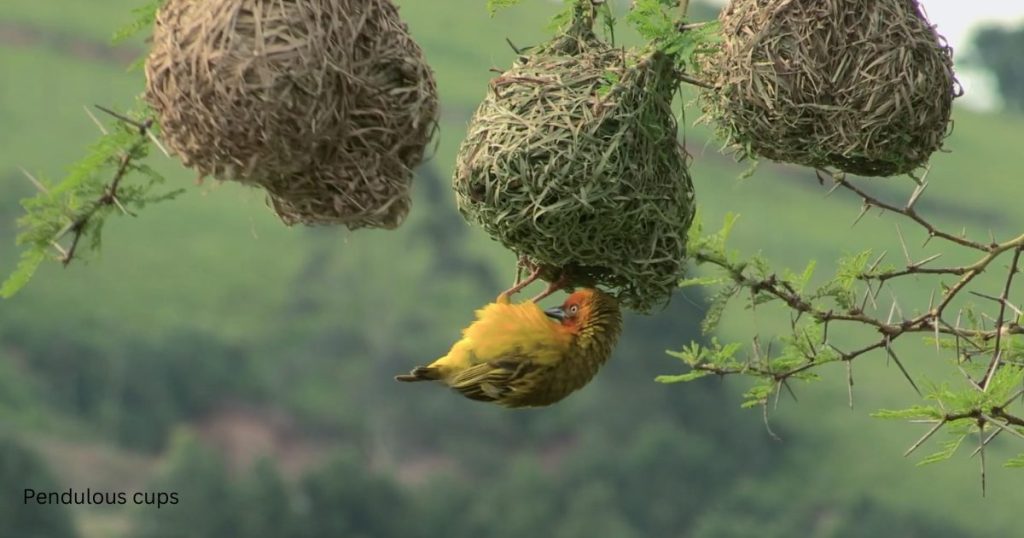
The globular and retort nests of African weavers are created using perhaps the most impressive and elaborate of all avian weaving techniques. These birds use a variety of knots in their constructions, producing nests of unrivaled intricacy and remarkable durability. The orioles and oropendolas of the western hemisphere are distant relatives of the African weavers use most of the same knots.
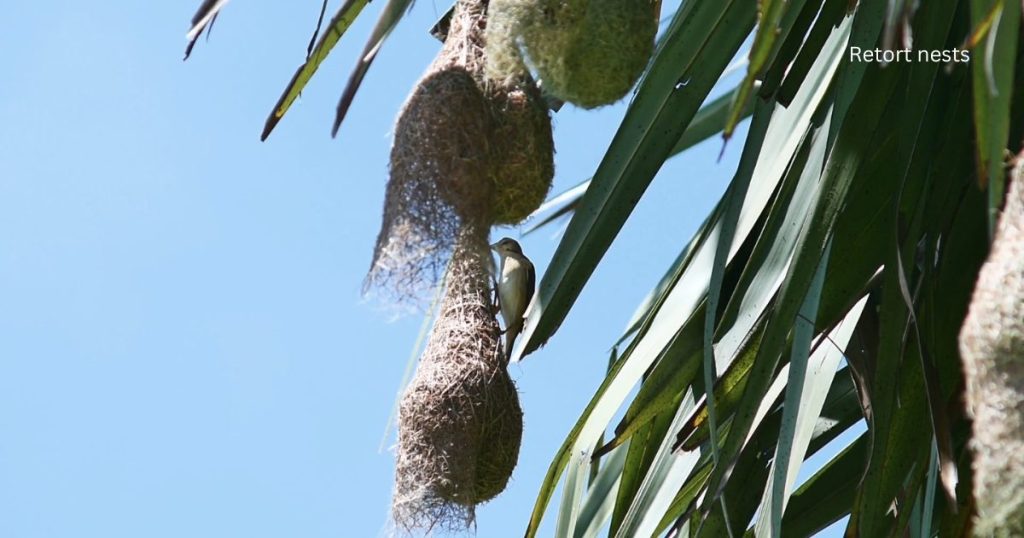
Mud‐nesting birds also employ a great variety of construction methods. The most familiar technique involves dipping dried vegetation into mud before applying it to the inner nest layers. Many species incorporate mud in this way. Certain swallow species represent the only birds that build adherent nests solely of pure mud. Selecting the right consistency of mud to meet the extraordinary engineering demands of these nests requires considerable discernment.
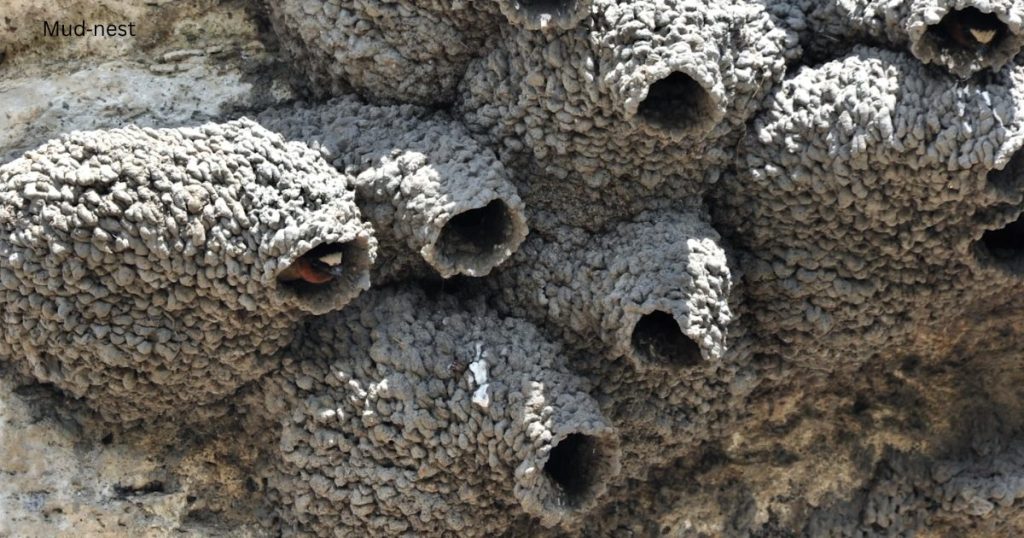
Sex roles in nest building
Males and females play different roles in nest construction, depending on the species. However, responsibilities tend to be quite consistent within certain groups. For example, in hummingbirds and most other lekking avian groups in which there is strong sexual selection on males, the female builds the nest entirely on her own. The opposite is true for polyandrous species, such as jacanas and phalaropes, in which the male builds the nest.
Dull coloured builds nest
In many sexually dimorphic species with brighter males, the female often holds the responsibility for most of the nest construction, perhaps because her duller colors which help avoid detection of the nest location by predators. When the male and female are similar in appearance, they often each take a almost equal share in nest building as in many herons, gulls, and corvids. In these species, the male may gather most of the material while the female builds the nest. In other birds, males take the lead in nest building and the female bird then adds the lining when the nest is finished.
Nest craftsmanship to attract mate
Many male wrens, and some weavers and raptors, construct surplus nests on their territories. Although the function of these extra nests is open to debate, they may allow rapid re‐nesting if a first nest is lost to predators or competitors. Extra nests may also help attract females: a study of Eurasian Wrens in the UK showed that the more nests a male had on his territory, the more likely he will obtain multiple mates A few such males with multiple nests attracts as many as five females. In other species, females evaluate males based on the craftsmanship of their nests. Red‐billed Queleas establish nests and pairs at about the same time, forming enormous colonies very rapidly. To attract a mate, a male builds the first half of a nest and displays from it; if a female deems the half-nest worthy, the pair builds the rest together.
Duration of nest building
The amount of time required for nest building depends on the type of nest (more elaborate nests take longer), the stage of the breeding season (construction often takes less time as the season progresses), and the weather conditions (rain and snow often cause delays).
A songbird in a temperate zone typically spends about 6 days building its simple cup nest 3days on the outer layer and 3 days on the lining. With shorter breeding seasons, temperate birds must generally build faster than their counterparts in the tropics.
For example, a tiny antwren in Panama may spend 10–15 days to build a comparable cup nest. Great Kiskadees, a type of neotropical flycatcher, build bulky, domed nests over several weeks; Chestnut‐headed Oropendolas require about a month to construct their long, pendulous nests. While building a nest, birds also forage, familiarize themselves within their territory and/or mate, and also interact with neighbors. Hamerkop pairs can build their enormous nests in as little as 20–25 days, but they typically spend only a few hours intensively nest-building on each of those days.
Nest appropriation and reuse
How reusing old nest attract nest predators and bacteria?
Most birds construct a new nest every year, especially if a previous nest supported young through to fledging. After a single use, constructed nests usually become flattened and misshapen. Used nests may also be littered with feces, uneaten food, the debris from nestling feather sheaths, and perhaps even the carcass of a chick that did not survive to fledging. These components create odors that might attract nest predators; used nests also support a wealth of invertebrates and bacteria, some helpful and others harmful.
Even most woodpeckers, whose cavities take great effort to excavate, usually create new nests every year.
Does all birds build new nest every year?
However, starting from scratch each year is not a universal rule;
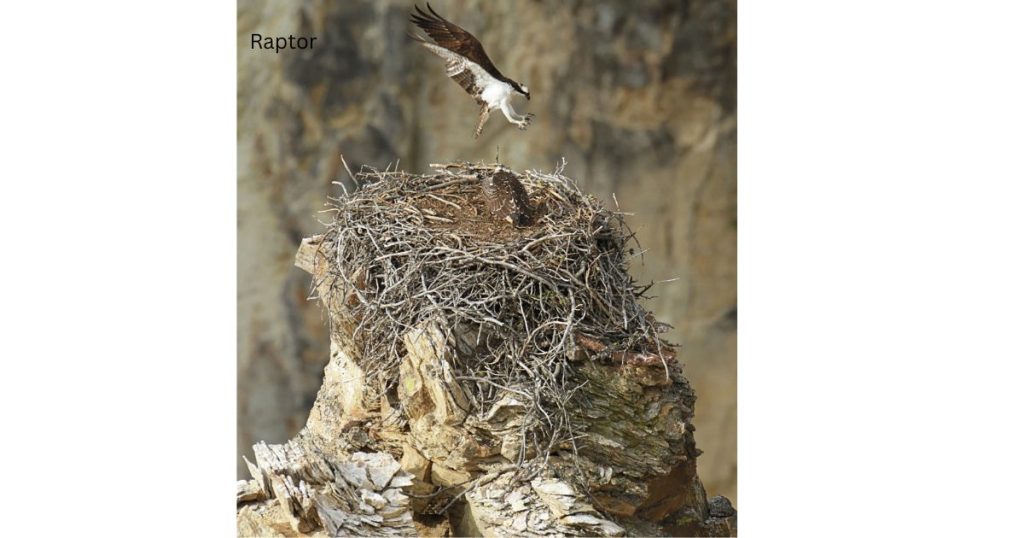
For example, raptors and other large birds with exposed nests may reuse them for generations, and many seabirds will return to the same burrow or rock ledge for their entire lifetimes.
Does reusing old nest has any advantage?
Reusing nest of other species even mammals
Reusing old nests must be an advantage for some birds because many species appropriate the used nests of other species.
For example, small gulls and some sandpipers that nest in northern boreal forests appropriate the old nests of land birds in small spruce trees. Great Horned Owls of North and South America often adopt large nests of other species such as crows, hawks, or even squirrels.
Old nest as a support
The large, thorny nests of South American thornbirds are known to be re-used by at least 11 other bird species. Sometimes an old nest is simply used as a physical support for a new nest: in North and Central America, Mourning Doves may place their flimsy stick nests on almost any elevated support, including the old nests of robins, grackles, or thrashers. The Little Swift of Africa adopts old mud retorts originally constructed by swallows, often affixing white feather “decorations” around the entrance.
Nest sanitation and fecal sac
Because young altricial birds often spend many days or weeks in the nest, parents often maintain behaviors that keep the area free of materials that might cause disease or attract predators. As soon as the young hatch, most parents remove the broken eggshells. In addition, the young of most passerines produce their feces, initially, in a tough, flexible bag called a fecal sac.
What is fecal sac? Do all birds produce them?
These fecal sacs make the removal and disposal of feces easy: many parents just carry them some distance and drop them. Some species drop these fecal sacs over water; wrens and nuthatches place them on tree branches. The duration taken to fecal sac production varies among passerines. The young of many species always produce their feces in these tidy packets until they leave the nest so that the nest is nearly without feces even after all the young have fledged. In contrast, the nestlings of some species stop producing their fecal sacs about midway through nestling life, leaving behind a matted mess of nest material and feces after they fledge.
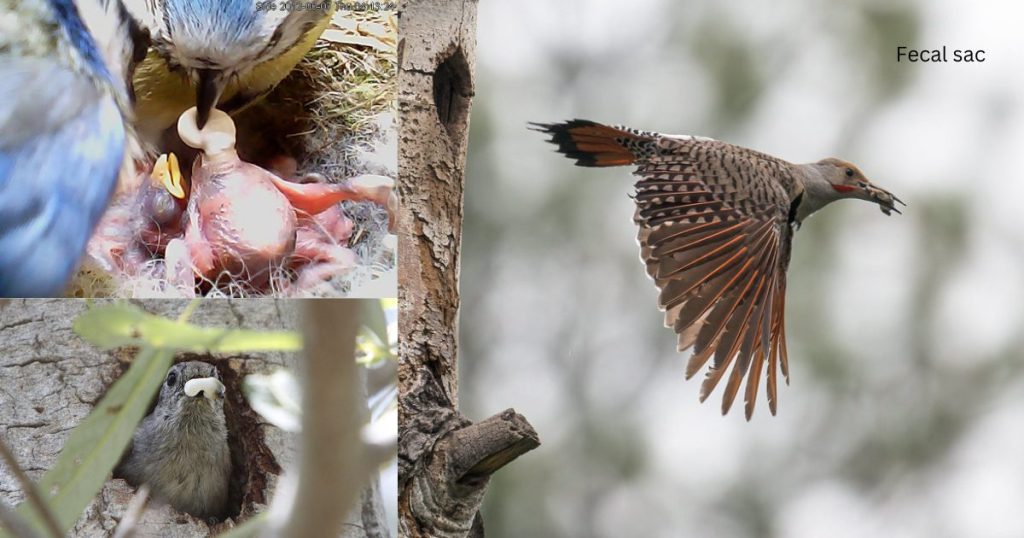
Importance of fecal sac
Although sanitation is the principal reason for fecal sac production, the sacs also allow some birds to recycle scarce resources: parents of some species eat the sacs rather than dispose of them. Both the sacs themselves (made of a protein–sugar mixture) and their contents contain valuable nutrients that the parents can consume and potentially reuse. Younger chicks, in particular, are relatively inefficient at digesting the food they are fed, and the sac contents thus retain food value that the parents’ more efficient digestive systems can recover.
Spotting a parent bird disposing of a fecal sac is a valuable find for a field ornithologist. A bird carrying a fecal sac is an unequivocal indicator of an active nest. Because the glistening white sacs are easy to see from a long distance, the act of carrying one draws attention to the bird; once spotted, the adult may provide clues regarding the location of its nest, which can be particularly helpful to researchers searching for the nests of cryptic species.
Does nestlings direct faces outside of the nest?
The young of many large bird species rapidly become adept at directing their waste outside of the nest. For example, an Ornate Hawk‐Eagle chick in Guatemala was able to begin defecating over the side of its large nest when it was 3 days old. Areas around some raptor nests soon become white-washed with splattered feces so much so that one sometimes can estimate the number of young present without even seeing them. The sheer volume of feces within pelican, cormorant, and heron colonies soon whitewashes and often kills the surrounding vegetation.
Nest linings
Many, if not most, bird nests are lined with materials different than those used in constructing the outer structure. Birds use a great many kinds of materials to line their nests. A bowl of sticks is usually lined with softer materials, such as plant fibers, mammal hair, or dried grass. A tree cavity may have fur, bark strips, moss, or feathers covering the bottom. The likely primary function of most nest linings is to help insulate the nest and its living contents and prevent chicks from getting tangled in the coarser outer nest materials. Many species line their nests with various combinations of natural materials.
Most thrushes build a nest of twigs, grass, and leaves cemented together with mud and lined with soft, fine grasses. The Song Thrush of Eurasia forms the mud portion of its nest into a hard, smooth lining sometimes using rotten wood, dung, or peat.
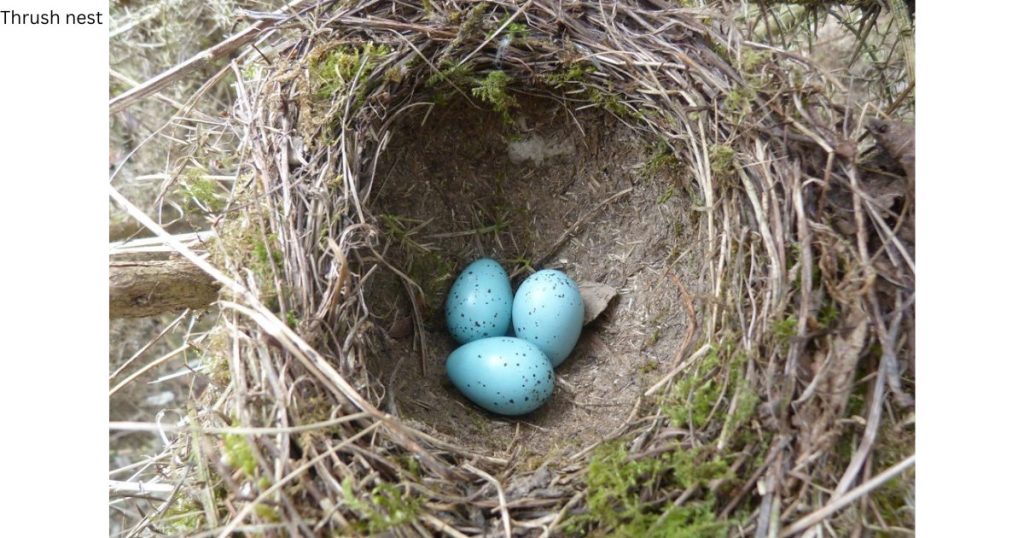
Most of the wood warblers of the New World line their nests with fine dried grasses, but the Worm‐eating Warbler of North America lines its nest with the spore capsule stalks of hair moss.
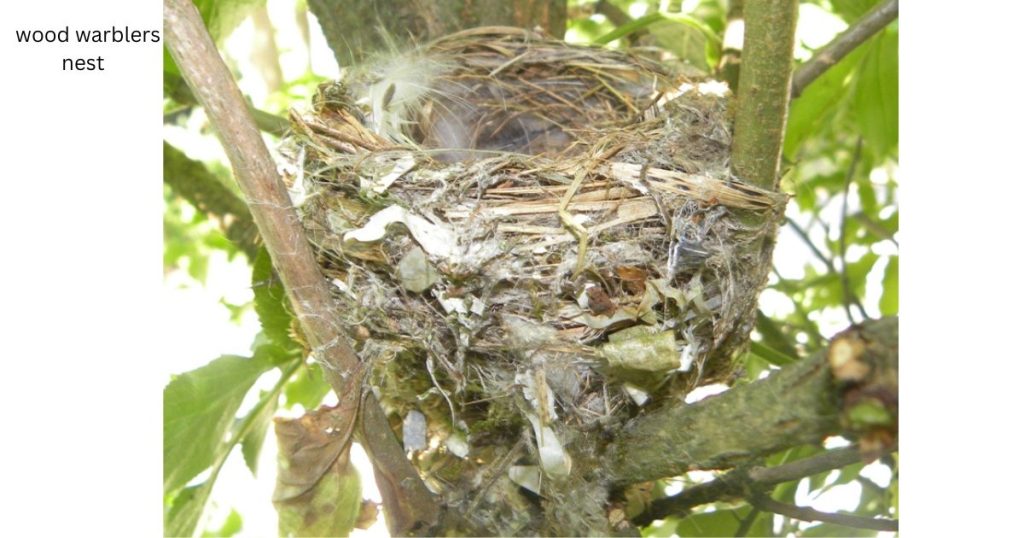
A surprising number of bird species worldwide line their nests with thin, hair‐like fungus fibers: one survey found filaments of a horse‐hair fungus in the nests of 98 bird species, spanning 27 families throughout tropical and Nearctic regions. Some previous reports citing the use of “animal hair” in nests likely mistook horse-hair fungus as real animal hair an easy mistake, given how closely they resemble one another.
Many birds also use feathers to line their nests.
Most female waterfowl line their nests with down plucked from their breasts, while several songbird species line their nests with feathers that are not their own. The Long‐tailed Tits of Europe could be considered the champions of feather collecting, often lining their oval nests with between 1000 and 2000 feathers.
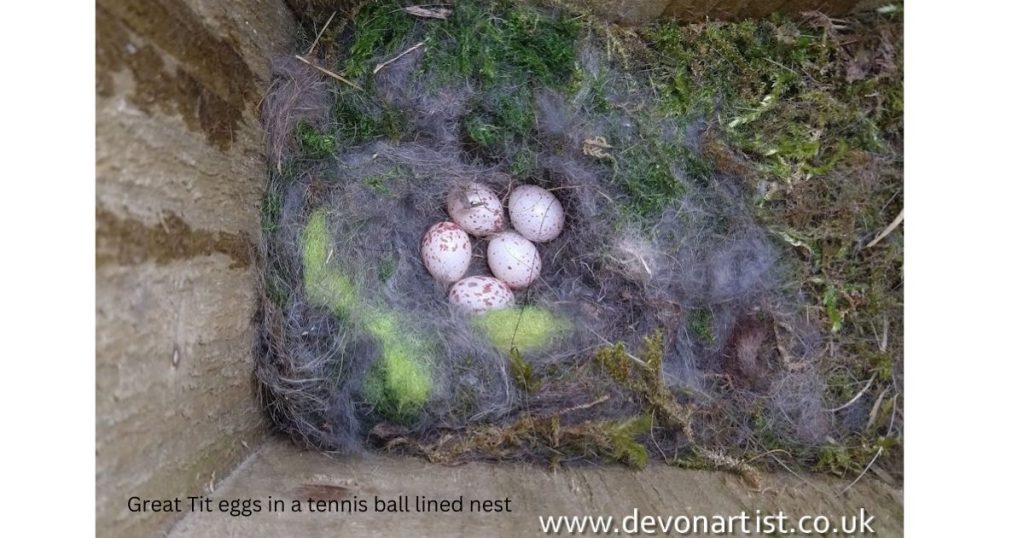
A variety of species, ranging from starlings to raptors, line or adorn their nests with green plant material. Early biologists, failing to see a function for this “decoration,” wondered if these birds simply might be expressing an aesthetic sense. However, research on European Starlings suggests that the green plants used as nest lining contain chemicals that repel or kill avian ectoparasites. Subsequent research on Spotless Starlings suggests that the compounds in these plants may affect the hormones of the attending female, and perhaps even the sex ratio of the offspring reared in the nest.